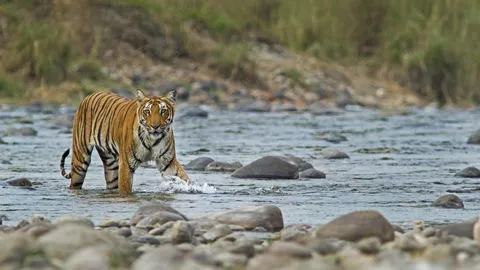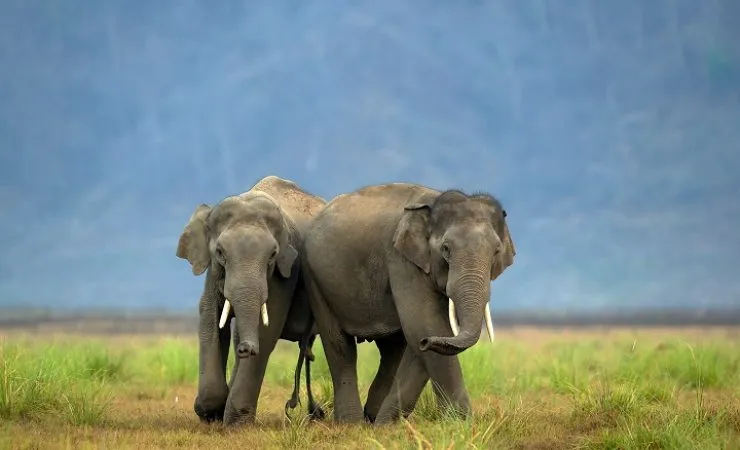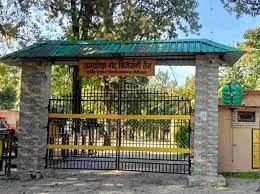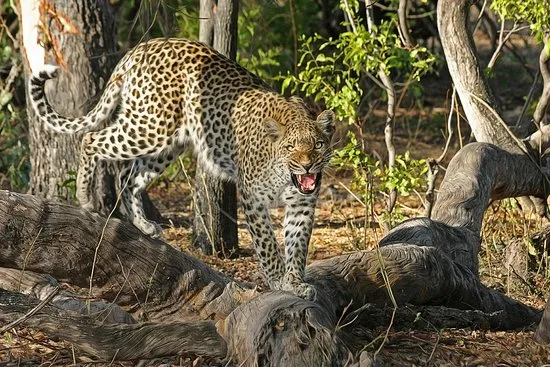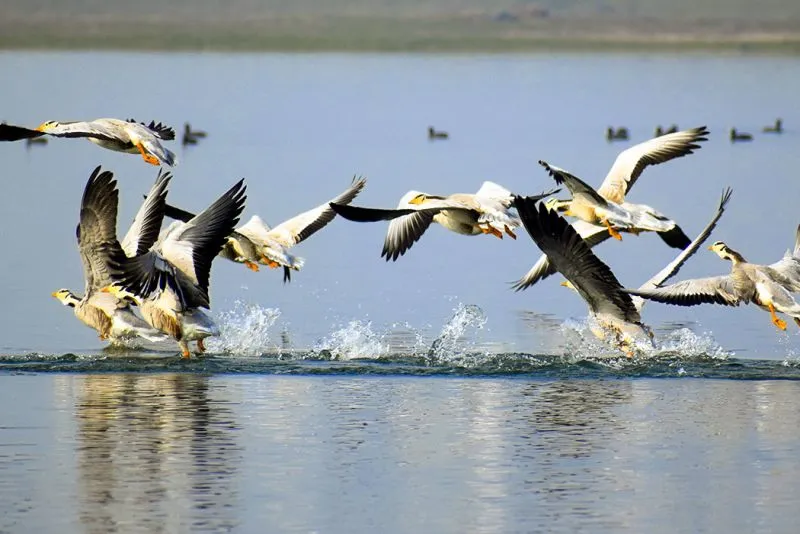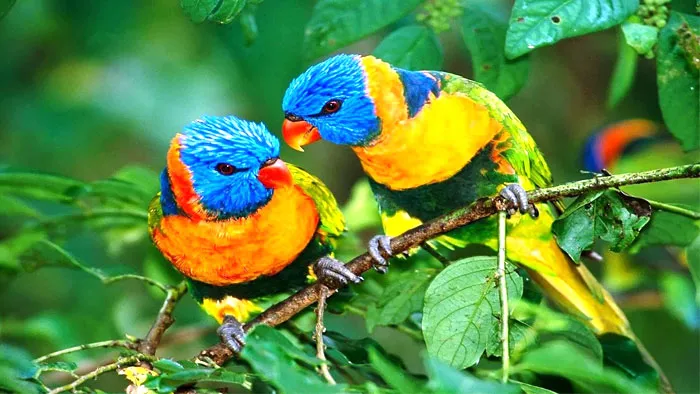Jim Corbett National Park, nestled in the foothills of the Himalayas in Uttarakhand, India, stands as a testament to the country’s rich biodiversity and conservation efforts. Established in 1936 as Hailey National Park, it holds the distinction of being India’s oldest national park. Renamed in honor of the legendary hunter and conservationist, Jim Corbett, the park is renowned for its diverse wildlife, particularly the majestic Bengal tiger.
A Haven for Diverse Flora and Fauna
Jim Corbett National Park encompasses a vast expanse of 520 square kilometers, encompassing a variety of landscapes, from dense forests and rolling grasslands to riverine belts and hills. This diversity of habitat supports a rich array of flora and fauna.
The Majestic Bengal Tiger
The park is most famous for its thriving population of Bengal tigers. These magnificent creatures roam freely in their natural habitat, offering visitors a chance to witness their beauty and power on thrilling jeep safaris. The park’s Project Tiger initiative, launched in 1973, has been instrumental in conserving this endangered species.
A Rich Tapestry of Wildlife
Beyond tigers, Jim Corbett National Park is home to a plethora of other wildlife, including:
- Mammals: Elephants, leopards, sloth bears, deer, langurs, and various other mammals inhabit the park’s diverse ecosystems.
- Birds: Over 650 species of birds grace the skies and forests of Corbett, making it a paradise for birdwatchers.
- Reptiles: Monitor lizards, crocodiles, and a variety of snakes can be found within the park’s boundaries.
Exploring Jim Corbett National Park
Safari Zones
The park is divided into several zones, each offering unique landscapes and wildlife viewing opportunities:
- Dhikala Zone: The largest and most popular zone, known for its diverse wildlife and stunning views of the Ramganga reservoir.
- Dhikala Forest Lodge: Offers accommodation and a chance to experience the park’s wilderness at night. (Contact: +91-5947-253977)
- Bijrani Zone: Easily accessible and known for its tiger sightings.
- Jhirna Zone: Open throughout the year and offers a good chance to spot elephants and other wildlife.
- Durgadevi Zone: A more remote zone, ideal for birdwatching and experiencing the park’s tranquility.
- Sonanadi Zone: Known for its elephant herds and birdlife.
Safari Options
- Jeep Safari: The most popular way to explore the park, offering an exciting and comfortable way to traverse the terrain and spot wildlife.
- Elephant Safari: Provides a unique perspective and allows access to areas inaccessible by jeep. (Currently not operational in all zones, check with park authorities for availability)
- Canter Safari: A larger vehicle that can accommodate larger groups, ideal for families or those seeking a more budget-friendly option.
Things to Do
- Nature Walks: Explore the park’s trails on foot, accompanied by a guide, for a more immersive experience.
- Birdwatching: Jim Corbett is a haven for bird enthusiasts, with numerous species to observe.
- Fishing: Enjoy fishing in the Ramganga River with a permit.
- Visit the Corbett Museum: Learn about the park’s history and the life of Jim Corbett. (Address: Kaladhungi, Uttarakhand 263139)
- Explore nearby attractions: Visit the Corbett Falls, Garjiya Devi Temple, and the Dhangarhi Museum.
Planning Your Trip to Jim Corbett National Park
Best Time to Visit
The park is open from mid-November to mid-June. The best time to visit is during the winter months (November to February) when the weather is pleasant and wildlife sightings are more frequent.
How to Reach
- By Air: The nearest airport is Pantnagar Airport, approximately 50 km from Ramnagar, the gateway to the park.
- By Train: Ramnagar railway station is well-connected to major cities in India.
- By Road: Well-maintained roads connect Jim Corbett National Park to Delhi and other major cities.
Where to Stay
A range of accommodation options are available near the park, from luxury resorts and forest lodges to budget-friendly guesthouses.
Tips for Visitors
- Book your safari permits in advance, especially during peak season.
- Follow park rules and regulations, including maintaining a safe distance from wildlife.
- Dress in neutral colors and avoid making loud noises.
- Carry binoculars, sunscreen, insect repellent, and a hat.
- Respect the natural environment and dispose of waste responsibly.
Jim Corbett National Park: A Conservation Success Story
Jim Corbett National Park stands as a shining example of successful wildlife conservation in India. Through dedicated efforts and community involvement, the park has not only protected endangered species like the Bengal tiger but also fostered a harmonious relationship between humans and wildlife. A visit to Jim Corbett is not just a wildlife adventure; it’s an opportunity to connect with nature and contribute to its preservation.
Additional Tips for Visiting Jim Corbett National Park
- Pack for all types of weather: Even during the dry season, evenings can be cool, so pack layers.
- Be prepared for limited connectivity: Mobile network coverage can be patchy inside the park.
- Carry cash: ATMs may not be readily available inside the park.
- Respect local customs and traditions: Dress modestly and be mindful of local sensitivities.
- Learn some basic Hindi phrases: While English is spoken in tourist areas, knowing a few Hindi phrases can enhance your experience.
Responsible Tourism in Jim Corbett National Park
- Choose eco-friendly accommodation: Opt for lodges and resorts that prioritize sustainability.
- Minimize your environmental impact: Avoid littering, conserve water, and use reusable bags.
- Support local communities: Purchase handicrafts and souvenirs from local artisans.
- Respect wildlife: Maintain a safe distance from animals and avoid feeding them.
Jim Corbett National Park: A Photographer’s Paradise
With its stunning landscapes and diverse wildlife, Jim Corbett National Park offers incredible opportunities for photography. Here are some tips for capturing memorable images:
- Use a telephoto lens: A lens with a focal length of at least 300mm is recommended for wildlife photography.
- Be patient and observant: Wildlife can be unpredictable, so be prepared to wait for the perfect shot.
- Respect the environment: Avoid disturbing animals or their habitat in pursuit of a photograph.
- Capture the essence of the park: Don’t just focus on the big animals; photograph the smaller creatures, landscapes, and details that make Corbett unique.
Jim Corbett National Park: A Destination for All
Whether you’re a wildlife enthusiast, a nature lover, or simply seeking a peaceful escape, Jim Corbett National Park has something to offer everyone. With its diverse landscapes, rich biodiversity, and commitment to conservation, it’s a destination that will leave you with lasting memories.



